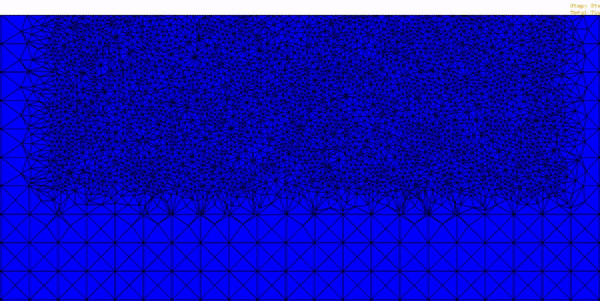Rolling contact fatigue (RCF) is a common cause of failure in tribological machine components such as rolling-element bearings (REBs), gears, and cam & followers. The two most dominant modes of RCF failure are surface originated pitting and subsurface initiated spalling. In this research area, the objective is to characterize the rolling contact fatigue behavior of different materials experimentally and analytically under different operation conditions. In the analytical investigations, 2D and 3D FE models are developed to predict the fatigue lives, crack initiation and spall formation of REBs.
Failure in a rolling contact scenario is due to high and reversing shear stresses occurring within the material. Over time these stress can initiate subsurface cracks and propagate these cracks to the contacting surface. Torsional fatigue has been proposed as a simplified means by which material performance in RCF can be predicted. By incorporating torsional fatigue data within a damage mechanics framework, the process of RCF is simulated.
 Voronoi FE RCF Spall Evolution
Voronoi FE RCF Spall Evolution
Bearing repair and refurbishment can be an effective way to extend bearing life. Bearing manufacturers have used various techniques to increase the working life of REBs, of which one of the ways is to limit the RCF related bearing damage. In order to allow bearings to reach their critical damage mode (subsurface initiated spalling) and useful estimated life, surface-originated damage in components of REBs can be removed. Few experimental and analytical investigations have been conducted on the effects of restoration on bearing life. Finite element models based on continuum damage mechanics were developed to simulate the refurbishing process and predict the fatigue life of refurbished bearings in the line and circular contacts.
Conventional models on RCF assume the material microstructure to be isotropic. However the formation and evolution of a fatigue crack is a highly localized process which requires a closer inspection at the grain level. Typical bearing materials like AISI 52100 bearing steels have isotropic material properties at the macroscale, but a closer look at the microstructure reveals a it to be a polycrystal with multiple grain phases which are inherently anisotropic. Studies at METL aim to bridge this gap by modeling the individual grains as anisotropic material with random spatial orientation, with homogenization of the resulting polycrystal aggregate to match the macroscale properties of the bearing material. Current Status: Both predictive and damage mechanics based models have been developed to estimate fatigue life and associated scatter. The initial results are found to match well with experimental bench test data.
Austenite is a phase of steel energetically stable at high temperatures. However, austenite can often be retained with the material microstructure of hardened steels and is capable of undergoing a phase transformation at a later point. Bearing steels subjected to RCF gradually undergo microstructural modification during their lifetime. These include the appearance of Dark-Etching regions (DER) and White-Etching regions (WER). Recently, the phase transformation of retained austenite (RA) has been experimentally linked to the occurrence of the Dark-Etching region within bearing steels. An damage mechanics based energy criteria was generated to predict the decomposition of RA and the appearance of the DER within bearing steels. The criteria was implemented within finite element simulations to replicate experimental results.
Coming Soon
MECHANICAL ENGINEERING TRIBOLOGY LABORATORY
Purdue University, West Lafayette, IN 47907 USA, (765) 494-4600